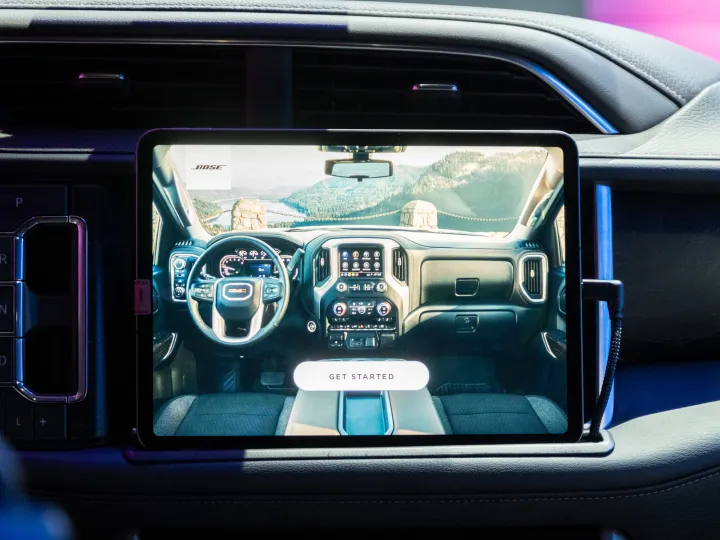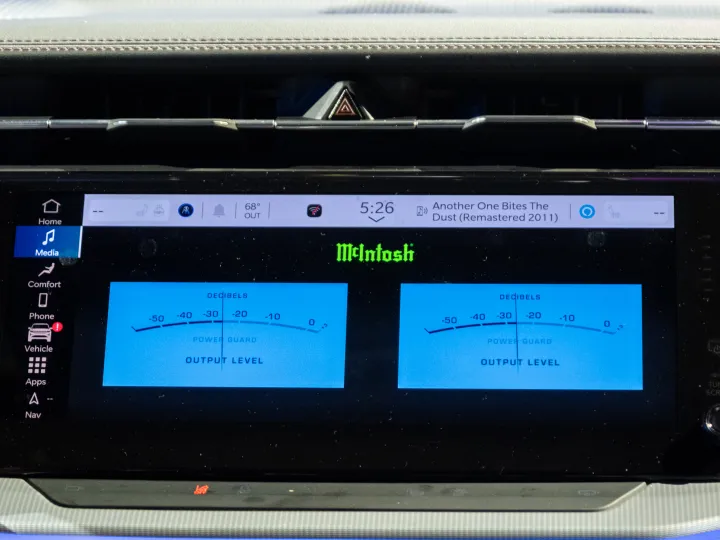Bose’s automotive audio business is huge, and it’s set to get even bigger. The company has been making big plays in car audio for some time now. The audio company works with premium brands like Porsche, building high-end speakers that allow drivers to experience high-quality audio on the road, whether they’re carting the family around in an Escalade or weaving around the highway (don’t do that) in a Porsche Macan.
But while it has a solid selection of audio brands under its belt, the world of personal audio is also evolving. Mercedes-Benz showed off its Dolby Atmos system at CES last year, and now, a year later, plenty of other brands are joining the trend. At CES 2025, Bose walked me through its current lineup of automotive audio products, as well as a sneak peek of what’s to come.
Immersive audio
The big trend in all areas of personal audio right now essentially boils down to supporting 3D audio formats like Dolby Atmos . Consumer home theater products are increasingly offering up-firing and side-firing speakers that can bounce audio around the room to simulate height and surround effects, while headphone brands are increasingly developing spatialized audio tech that can convert stereo audio into simulated spatial audio.
Now that’s extending into the car, and in a big way. As mentioned, we’re a year out from when Mercedes-Benz began showing off its Dolby Atmos-enabled speakers, and at the time, it was absolutely an impressive demo. Now others, including Bose, are working hard at offering similar technologies, and I got to experience Bose’s next-generation Atmos-enabled speaker system in a GMC Denali. While the system isn’t on the road just yet, Bose told me that it’s essentially finalized and will be shipping this year.
Indeed, the demo was quite impressive. Bose offers a few different technologies for spatialized audio, including tech that can spatialize stereo audio for a more immersive experience. Of course, it can also accept spatial audio formats as an input, avoiding having to run a spatial algorithm itself to convert audio into a spatial format.

But I have a confession to make. Even after the undeniably impressive demo, I still don’t like listening to music in spatial audio. Maybe I’m just getting old, but it just kind of feels a little wrong. Most music was still originally mixed for stereo listening, and oftentimes, the Dolby Atmos re-mixes are gimmicky at best. The music we listened to in an Escalade, which had Bose’s new tech, sounded spacious and immersive — but I would never listen to music originally mixed for stereo in a spatial format, and it would take a lot of getting used to for me to listen to music actually mixed for Dolby Atmos.
Perhaps some of that comes down to the idea that even the concept of spatialized music feels a little unnatural. Stereo audio allows you to play with panning to the left, the right, and anywhere in between. How is music presented when you go to a concert? Typically, it’s on a stage — in front of you to the left, the right, and anywhere in between. Sure, audio bounces around a room, but that’s a little different from it sounding like a percussionist is playing above you. I will say, though, that I do enjoy watching movies in spatial audio — when you do want as immersive of an experience as possible. Typically, though, you probably won’t be watching movies while you drive.
But I digress. The speakers built into the car did sound great, with deep and resonant bass and crisp details. And, presumably, you’ll be able to set music to play in stereo anyway. Options are good — just because I don’t like listening to music in Atmos doesn’t mean no one else should be able to.
Ultra high-end
I also had a chance to check out something else in the Bose portfolio — speakers developed by what are now Bose brands, Sonus Faber and McIntosh.
These are the speaker systems that I really enjoyed listening to. Bose is just as much a tech company as an audio company, but the likes of Sonus Faber and McIntosh are traditional audio companies with a goal of simply creating the best audio they can — even if that means building speakers that cost $700,000.

I won’t dwell too long on this — nothing that I saw from Sonus Faber and McIntosh at the show was actually new. But I will say that Bose’s acquisition of the brands makes a little more sense in the context of automotive. Sitting in a Jeep Wagoneer S with speakers built into it, I experienced what could be among the best automotive speaker system out there right now. Audio was incredibly crisp and spacious, with every single instrument getting its own space in the mix. In this demo, audio was in stereo, and I loved it. Oh, and I also happened to get a demo of the $700,000 Sonus Faber speakers. Pumping volume up to 70% in the T-Mobile Arena was an audio experience I likely won’t forget soon. It was loud … but the system is amongst the best-sounding I’ve ever heard, and as an audiophile with a background in studio recording, I’ve heard plenty of great-sounding systems.
I will say, however, that Bose’s acquisition of the brands makes a little more sense in the context of automotive. I just hope Bose at least lets them stick to what they’re doing when it comes to the development of ultra-premium speaker systems and power amplifiers without forcing tech that customers of the brands don’t want or need.



